Abstract
CONTEXT: We previously presented the results of an original pooled data set of 961 amblyopic patients who underwent patching therapy for amblyopia from 1965 to 1994 (study group 1). Three types of amblyopia were considered: anisometropic, anisometropic-strabismic, and strabismic. Analysis of this group's success was related to the age at which therapy was initiated, the type of amblyopia, and the depth of visual loss before treatment was begun. The purpose of the current study is to test the validity of these findings on a second group of 961 amblyopes employing the data set used by Woodruff and associates in their publications (study group 2). These 2 data sets, after adjustment to conform to the definitions of age, amblyopia, anisometropia, and similar items utilized in common between the 2 study groups, will be compared for the risk factors predictive of successful occlusion therapy. OUTCOME: As in the previous study, the success of occlusion therapy is defined as a visual acuity of 20/40 or better at the end of treatment. RESULTS: Success by the 20/40 criteria was achieved in 73.7% in study group 1 and in 59.9% in study group 2. By category, the rate of success in study group 1 was 77.2% in strabismic amblyopia, 67.2% in anisometropic-strabismic amblyopia, and 66.0% in anisometropic amblyopia. In study group 2, success was 61.2% in strabismic amblyopia, 51.2% in anisometropic-strabismic amblyopia, and 63.0% in anisometropic amblyopia. Study group 1 univariate analysis related success in each group to the age at which therapy was initiated, the type of amblyopia, and the depth of visual loss before treatment in each group. In study group 2, univariate analysis related success of occlusion therapy to age and the depth of visual loss before treatment. Type of amblyopia was not related to outcome success in this group. When the 2 data sets were pooled, the risk factors for success were age and depth of visual loss at onset of treatment. CONCLUSIONS: Factors that appeared closely related to a successful outcome of patching therapy were patient age and depth of visual loss before treatment. These conclusions further support the value of early detection and screening for amblyopia, its prevention, where possible, and its adequate and vigorous treatment when it is detected and diagnosed.
Full text
PDF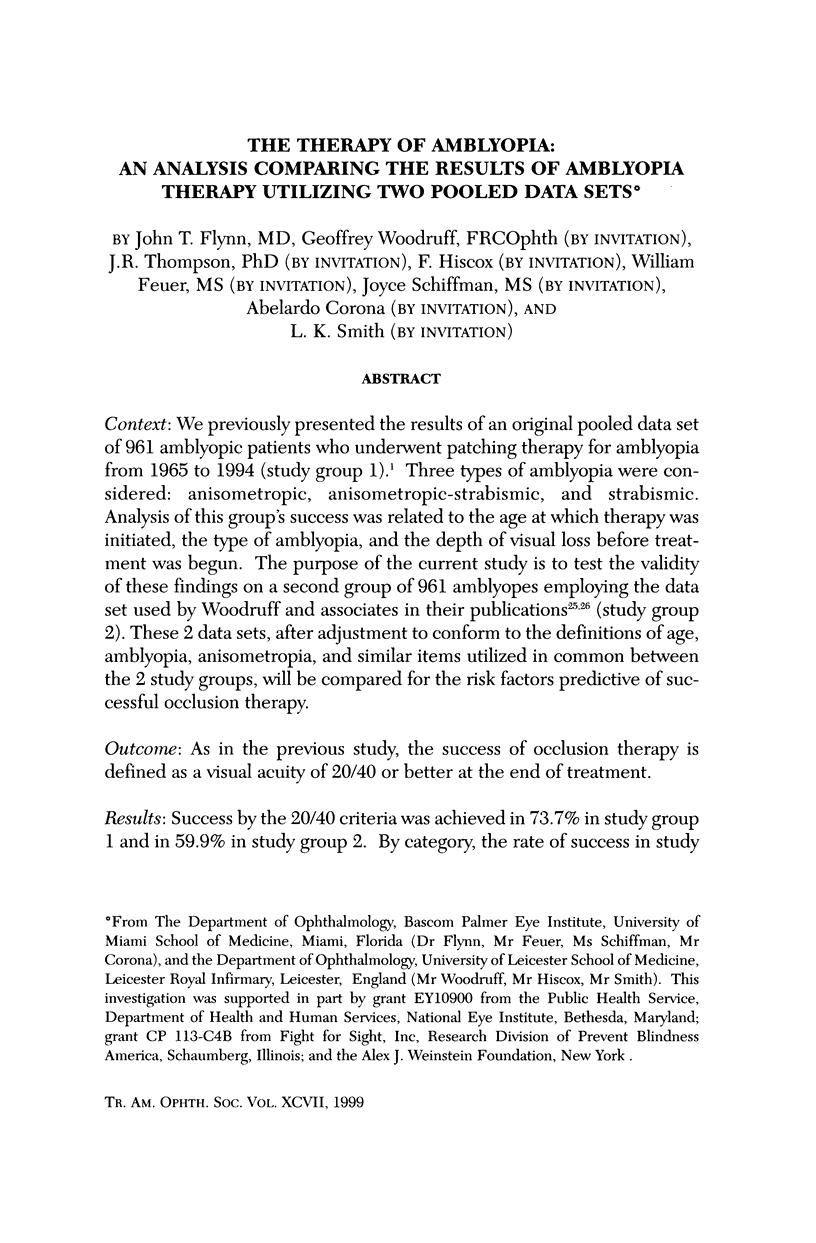
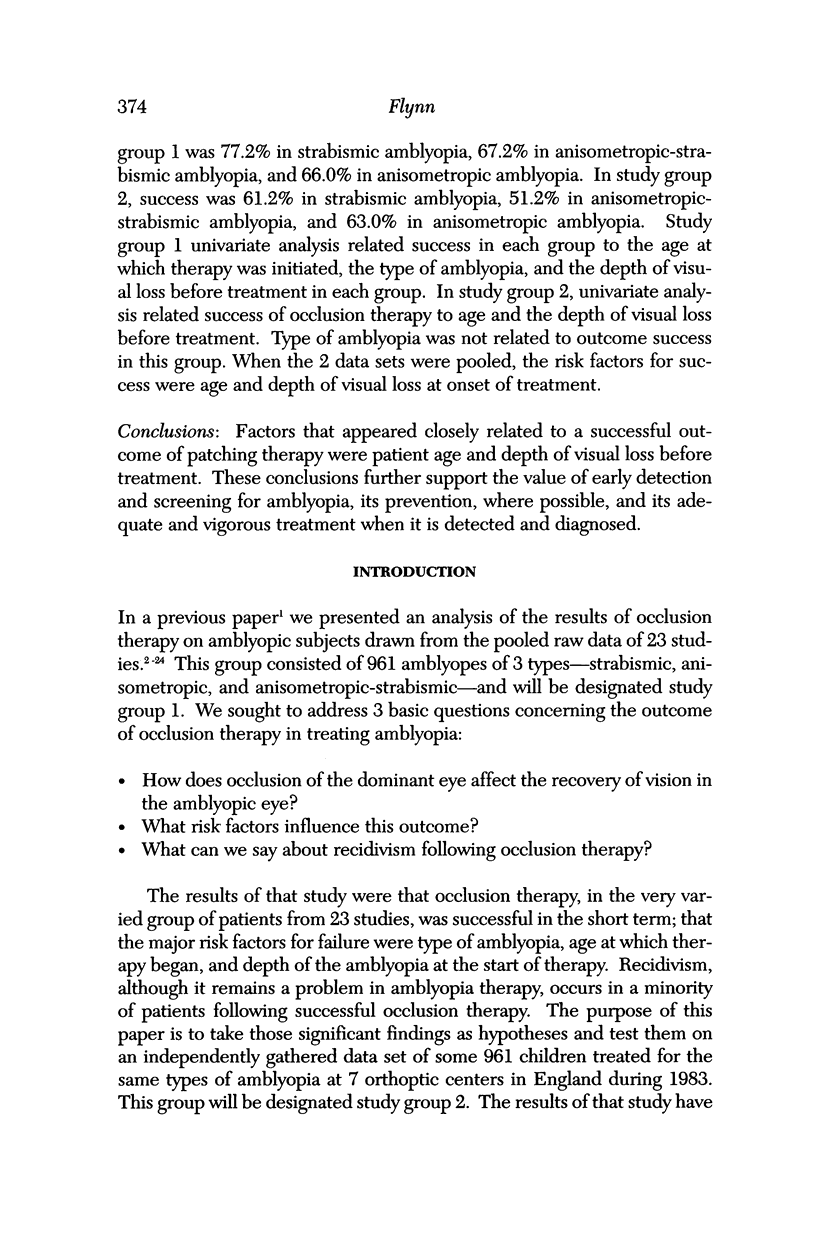
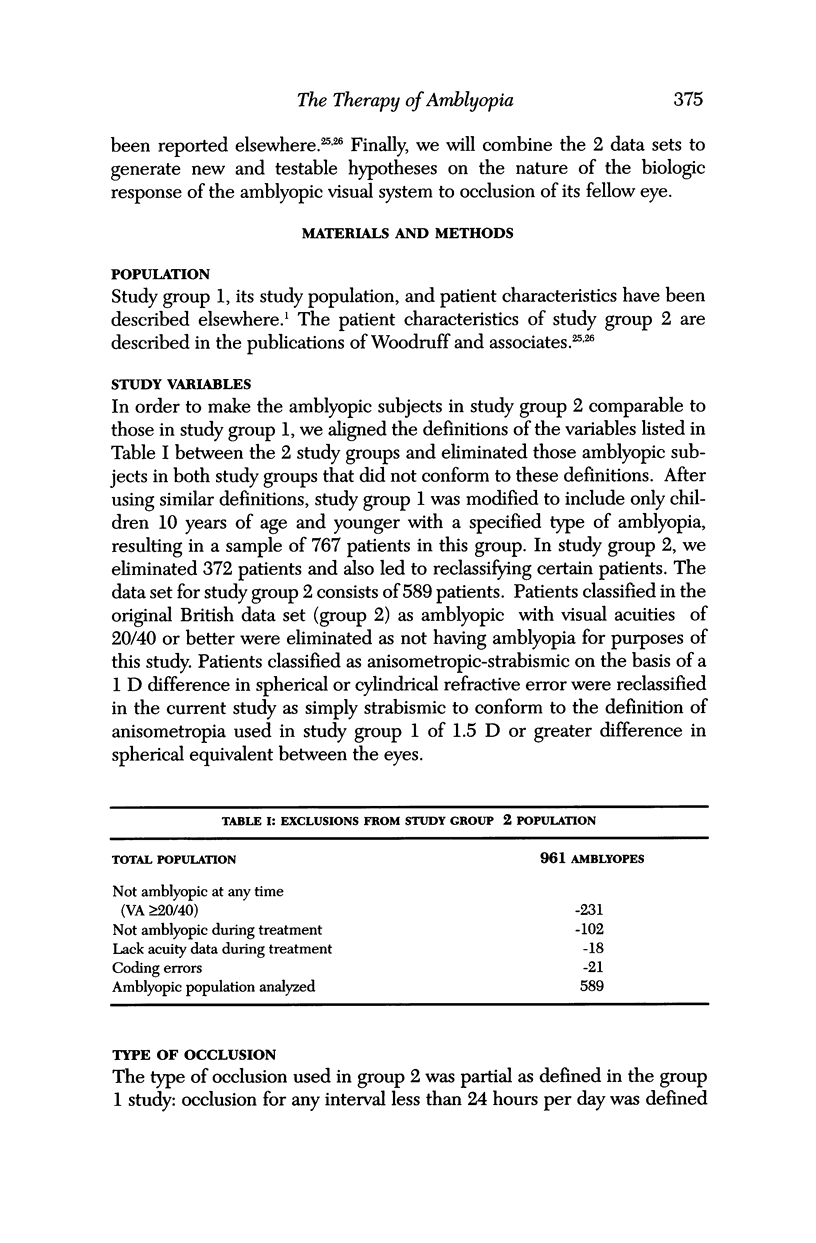
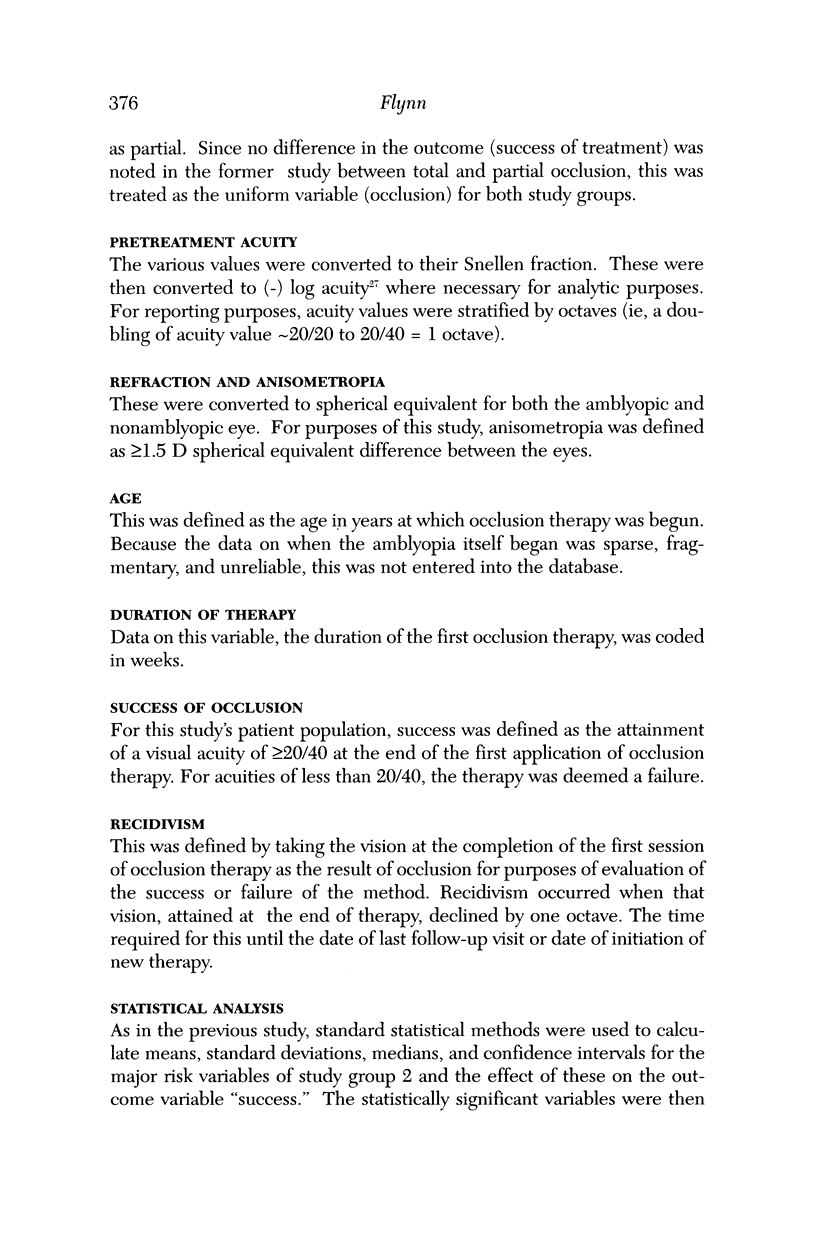
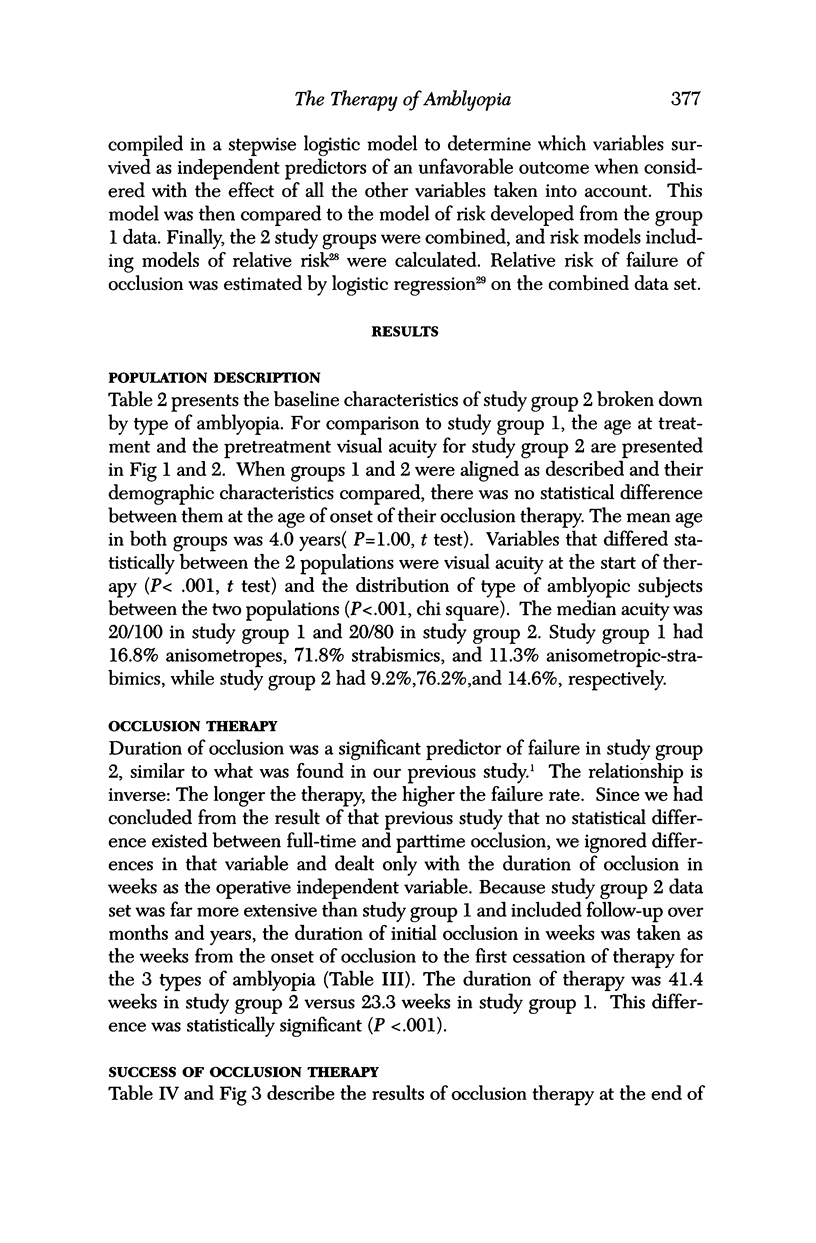
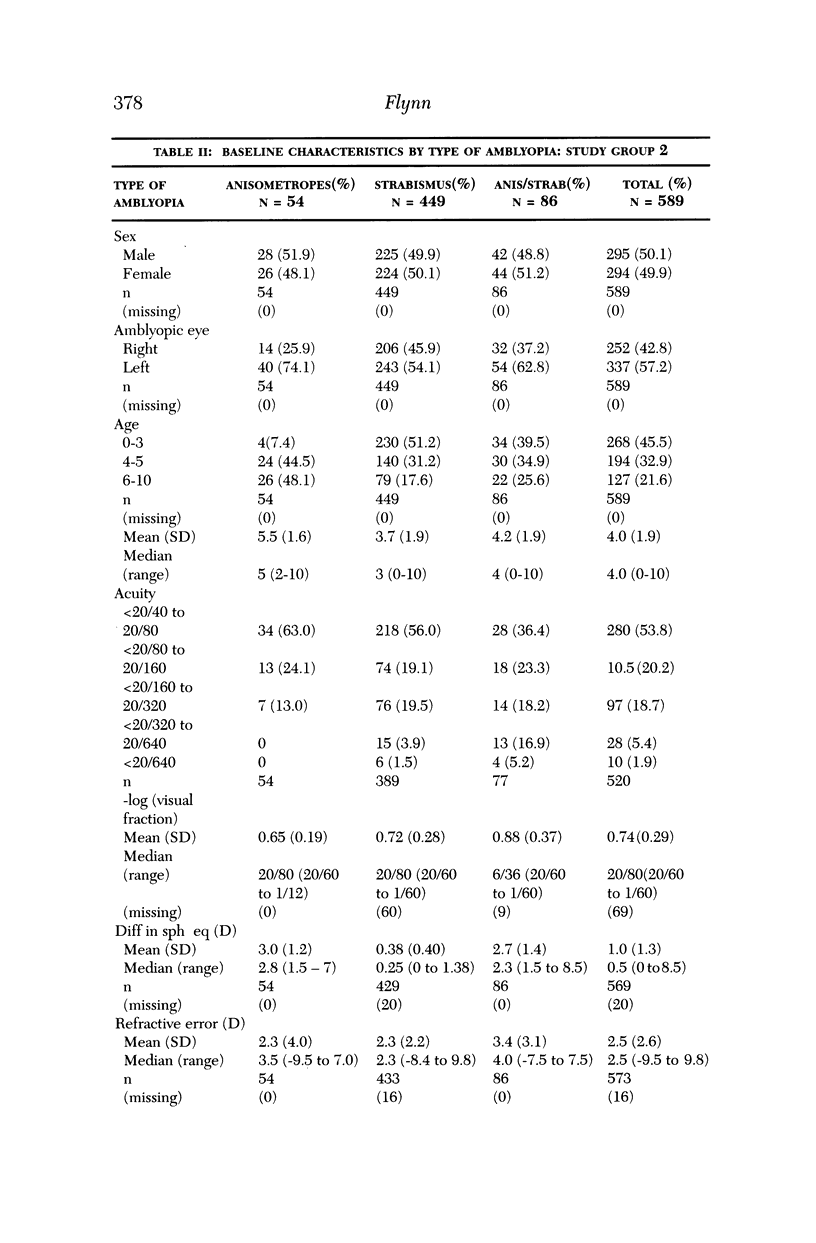
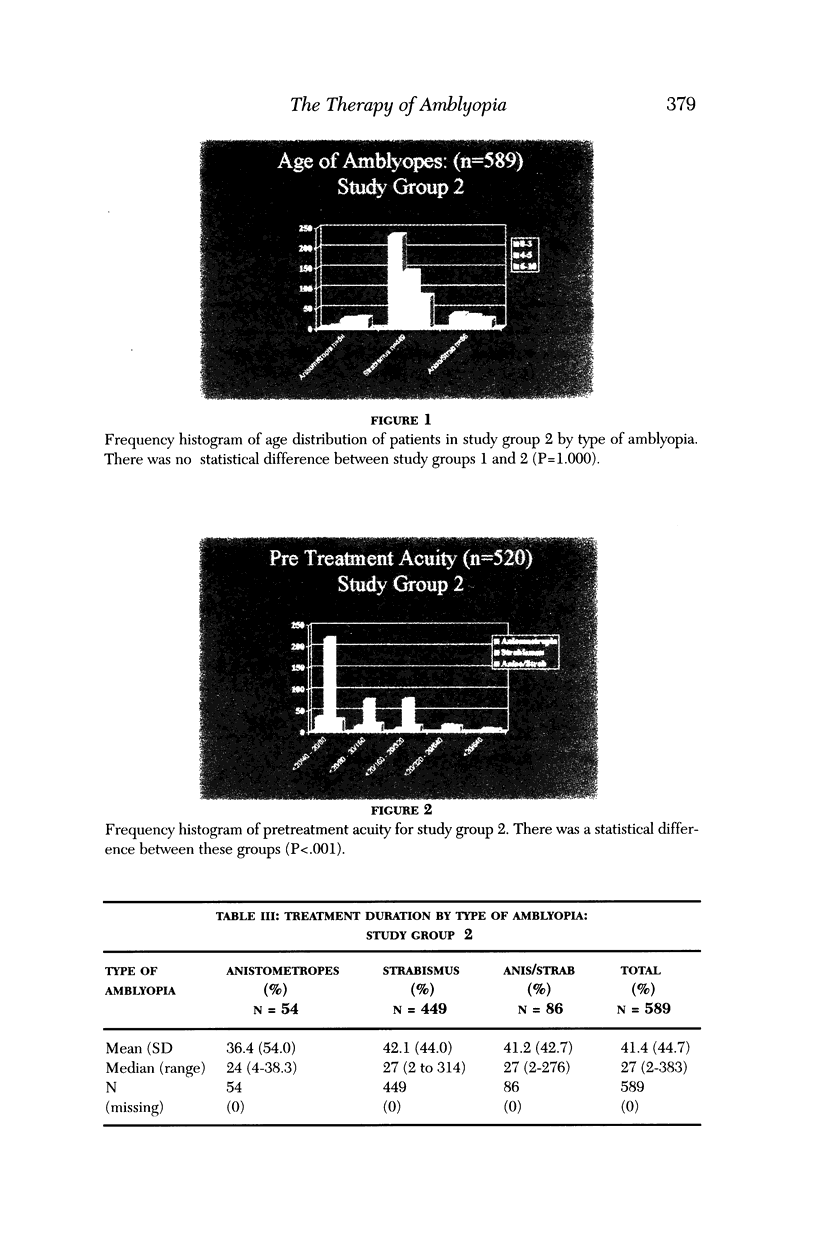
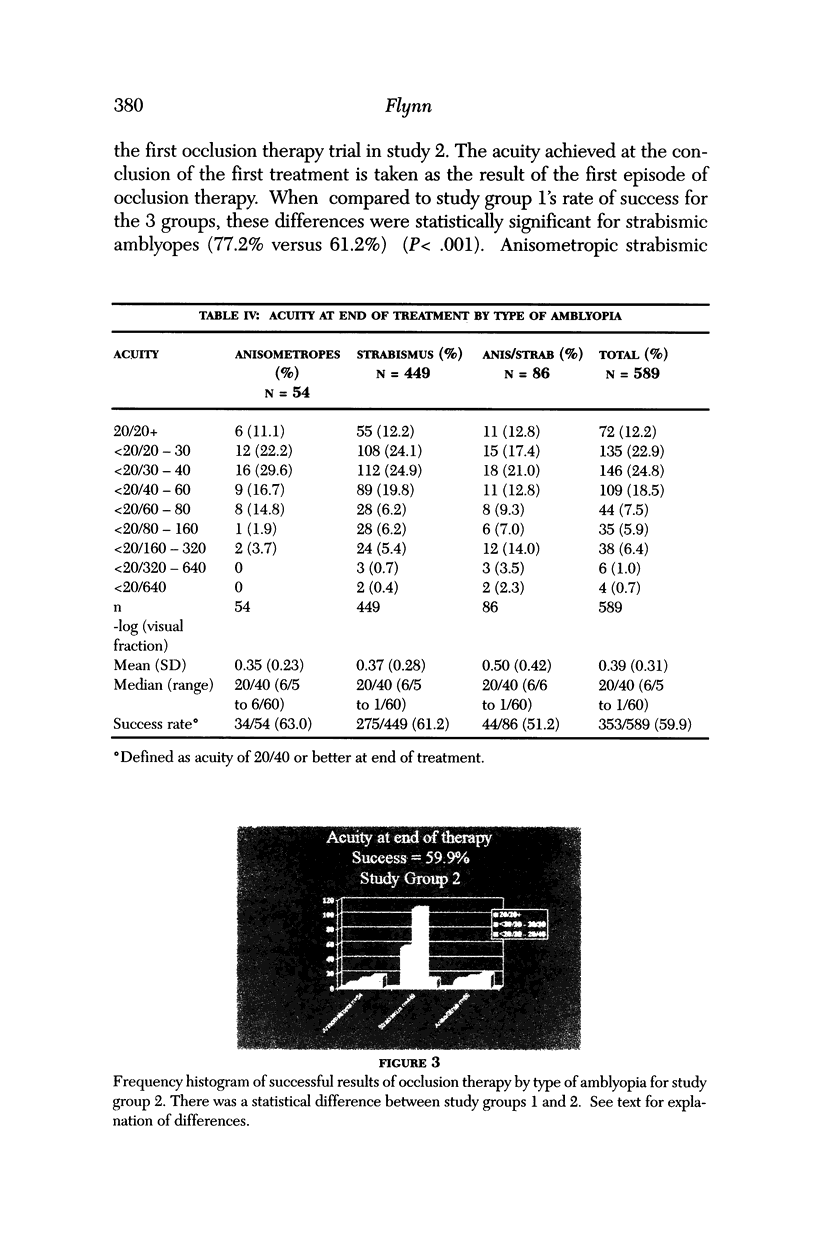
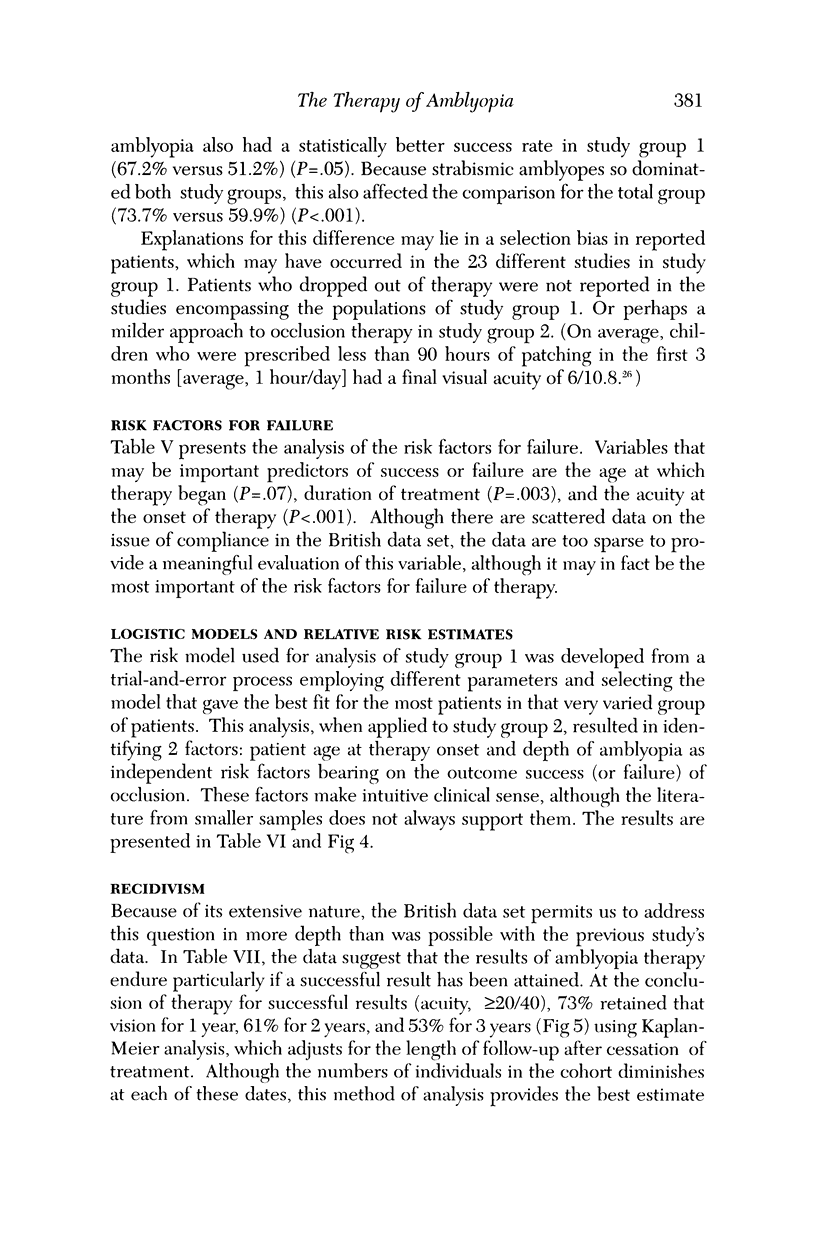
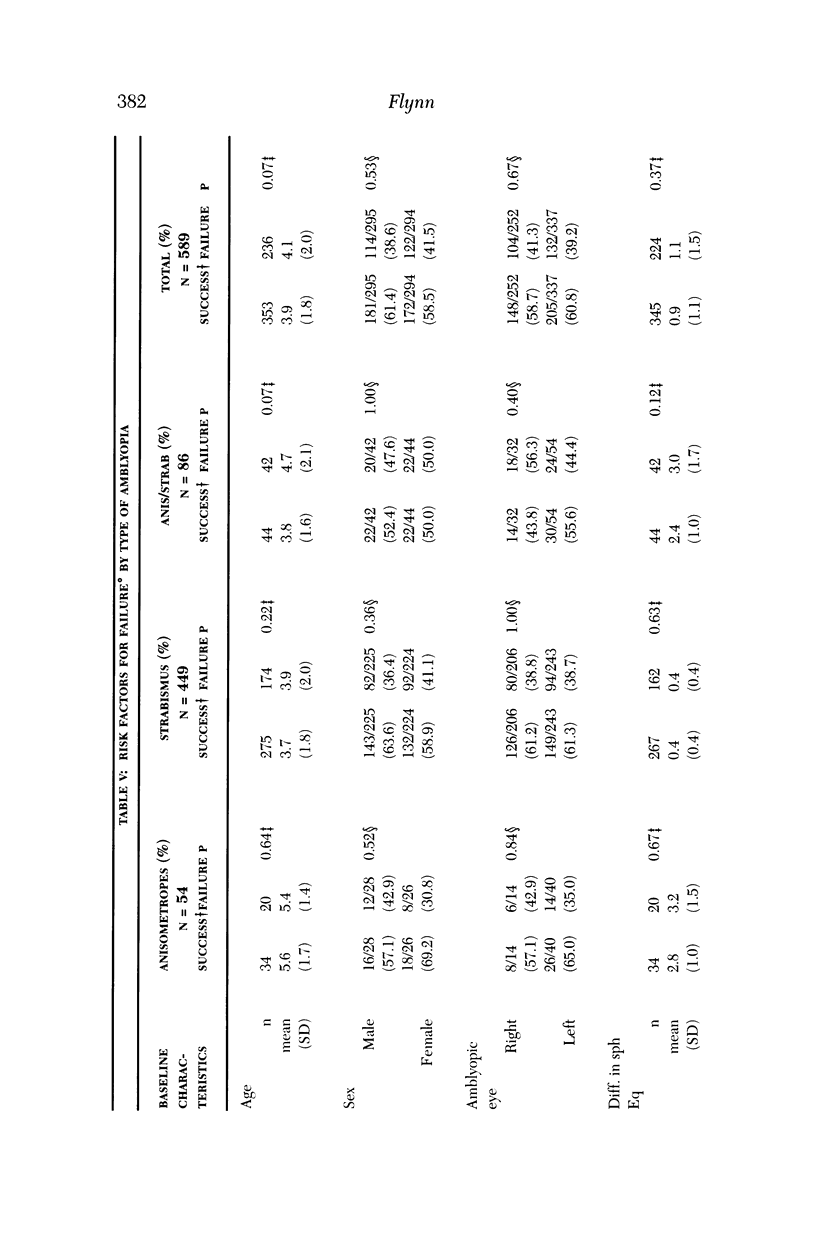
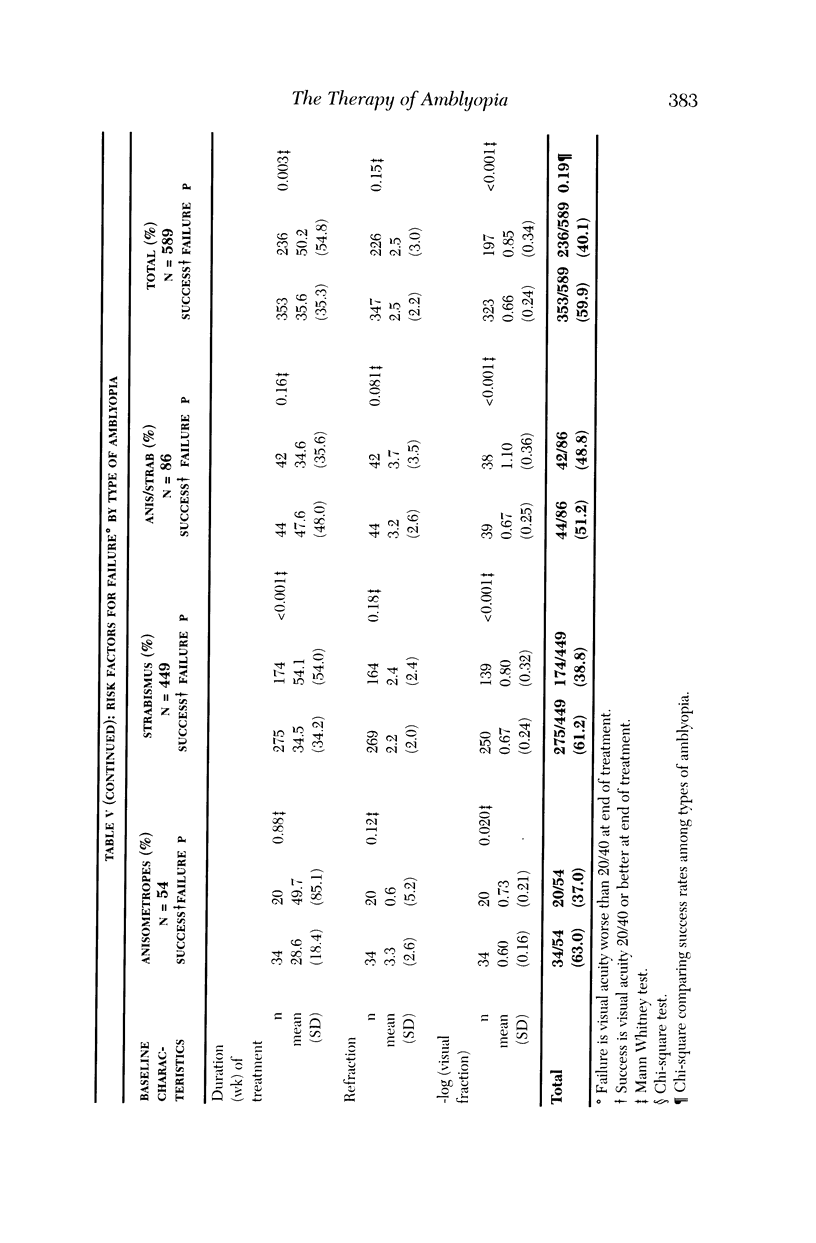
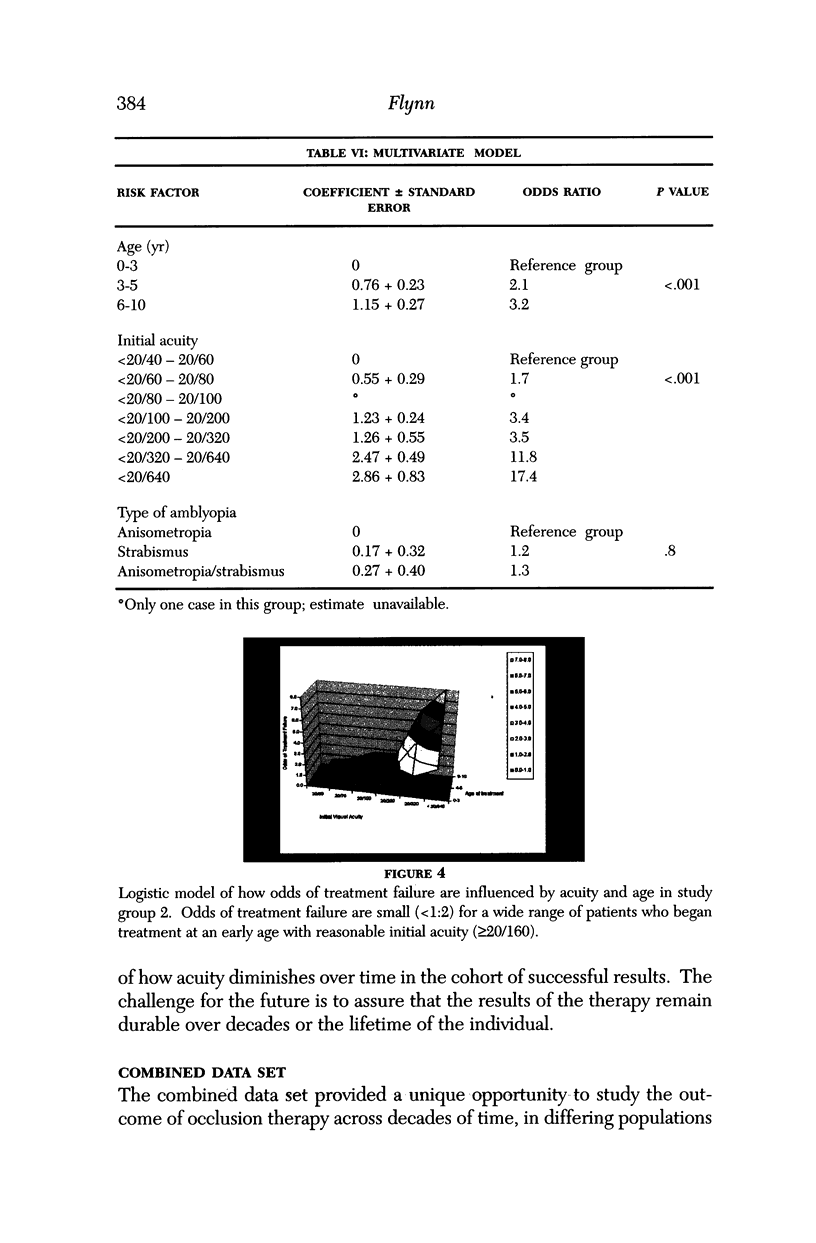
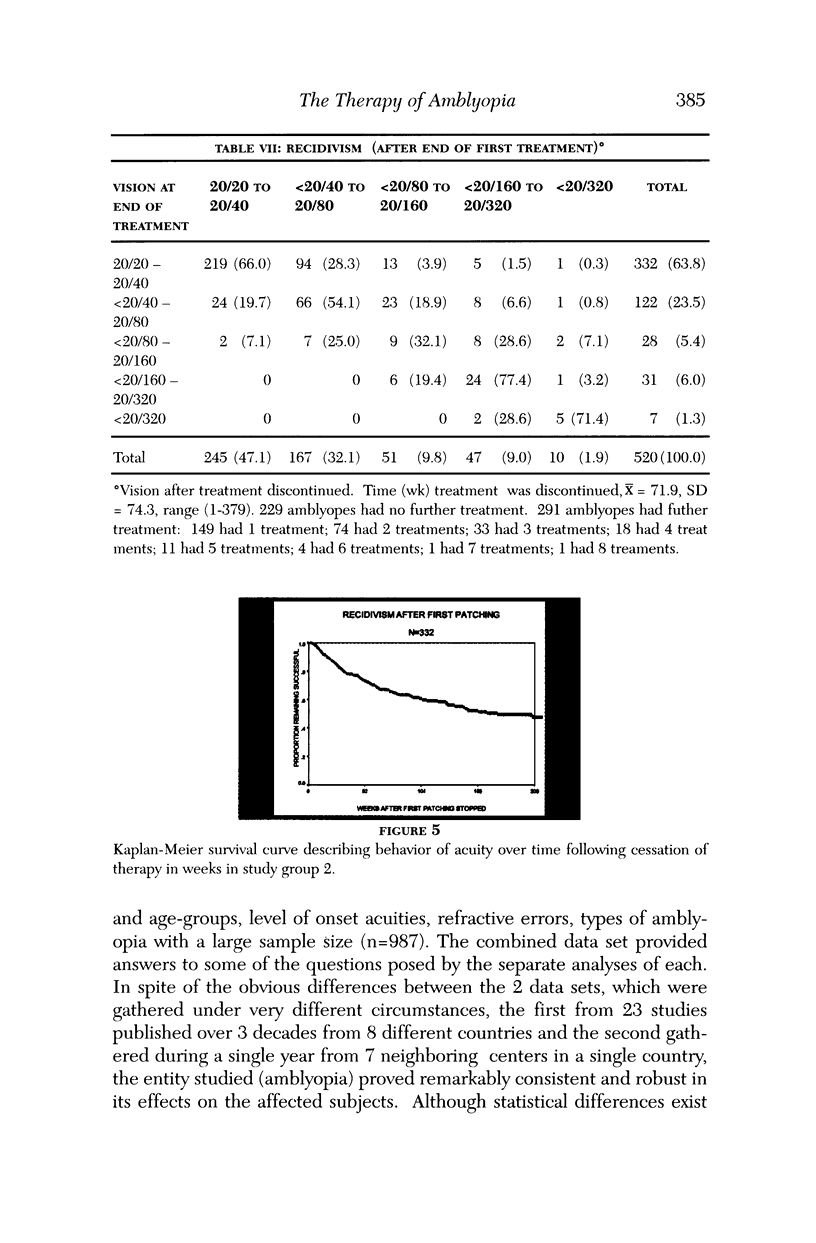
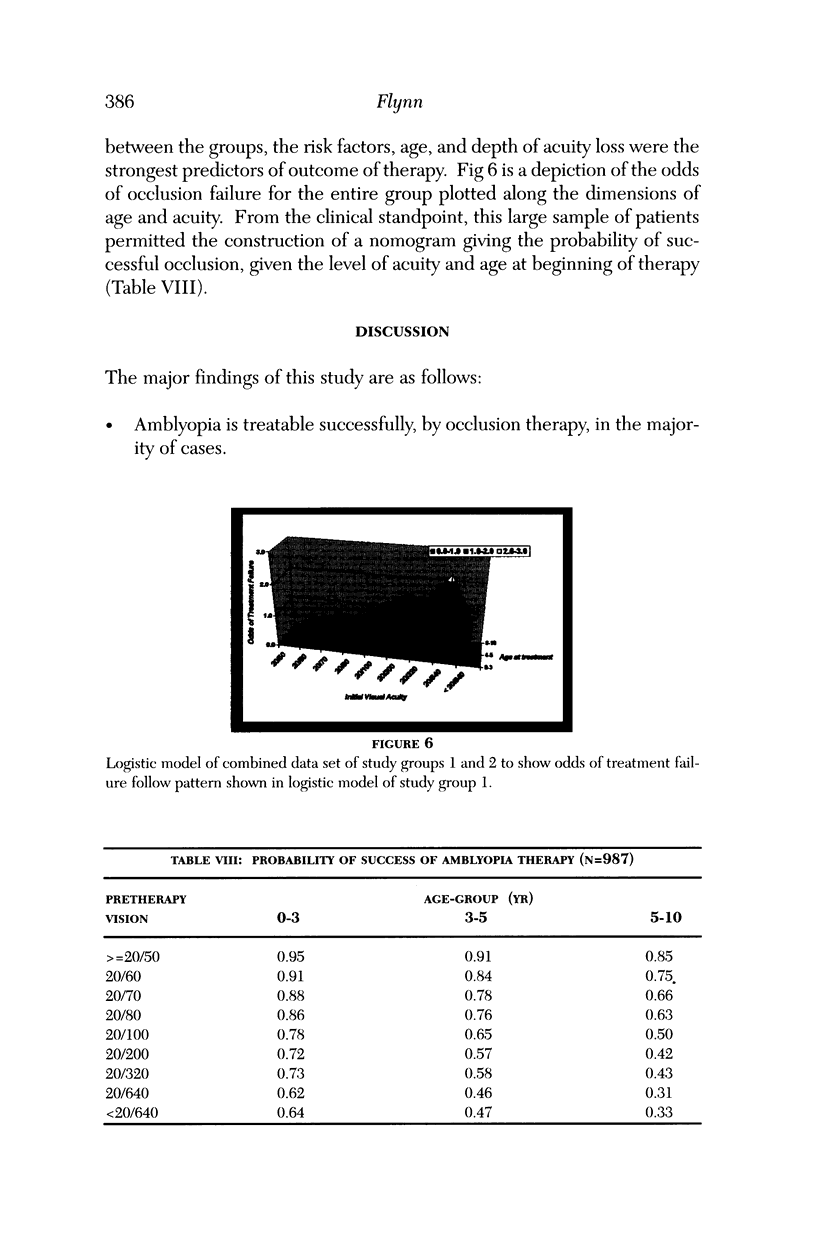
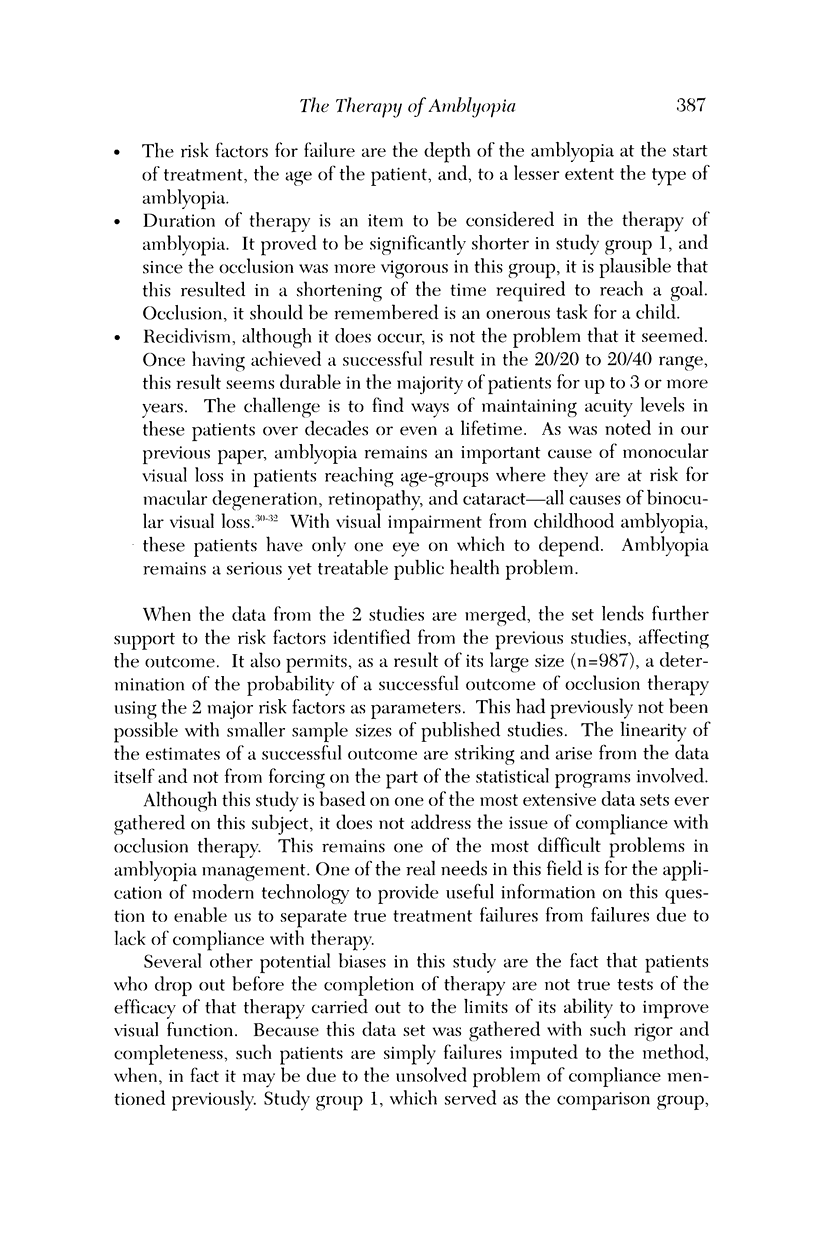
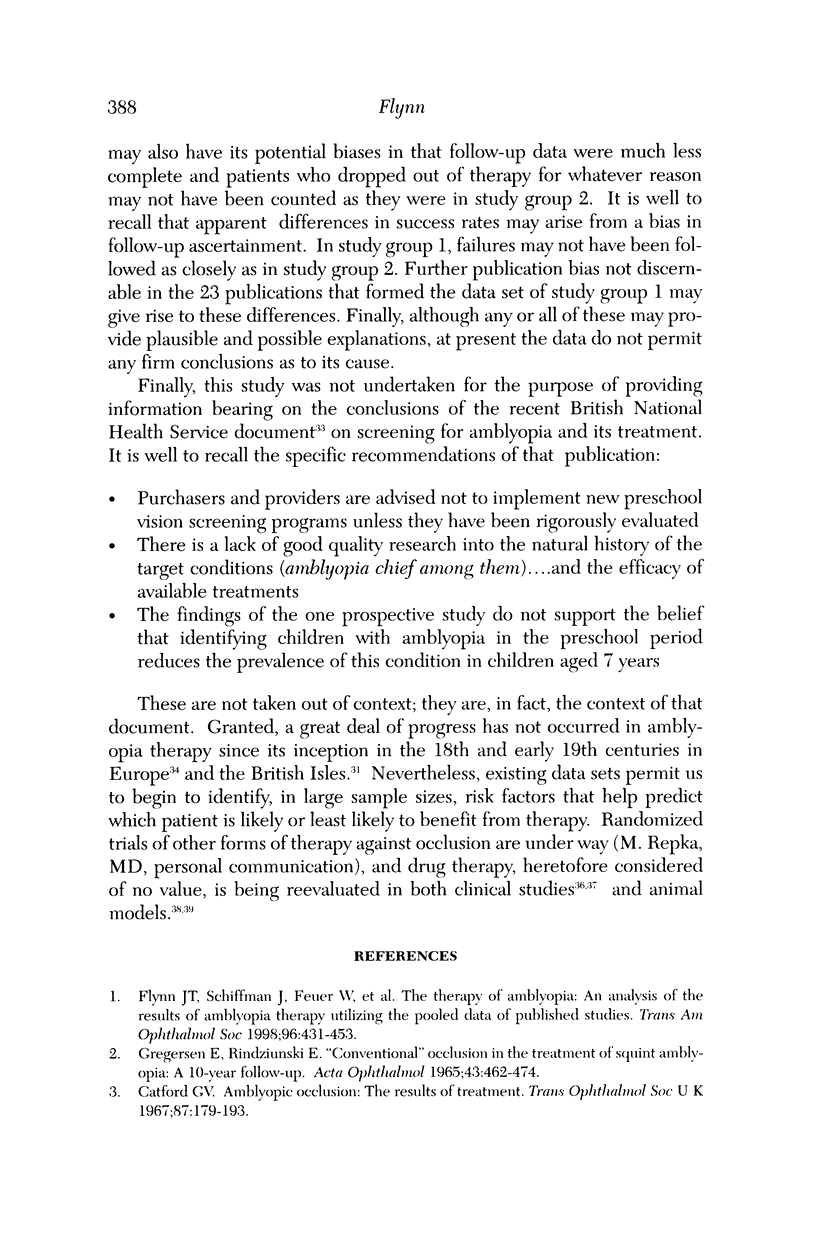
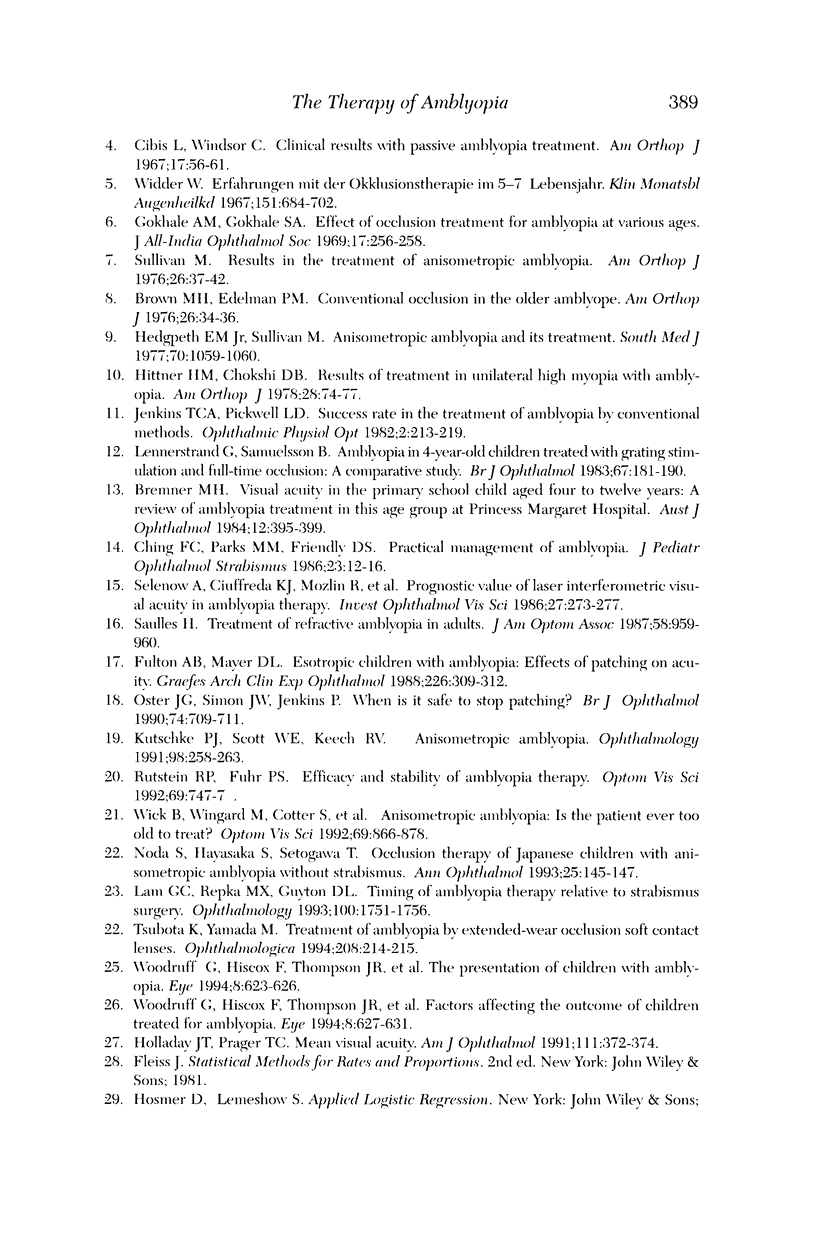
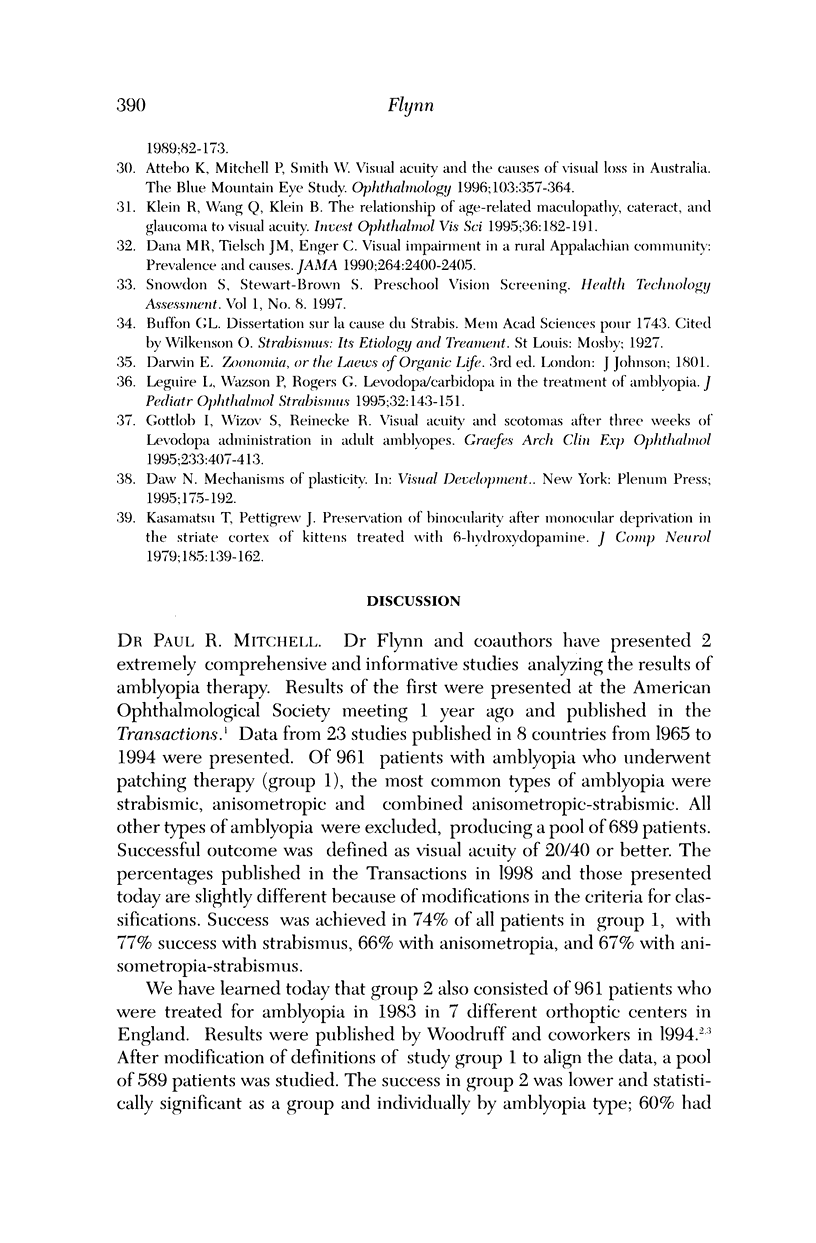
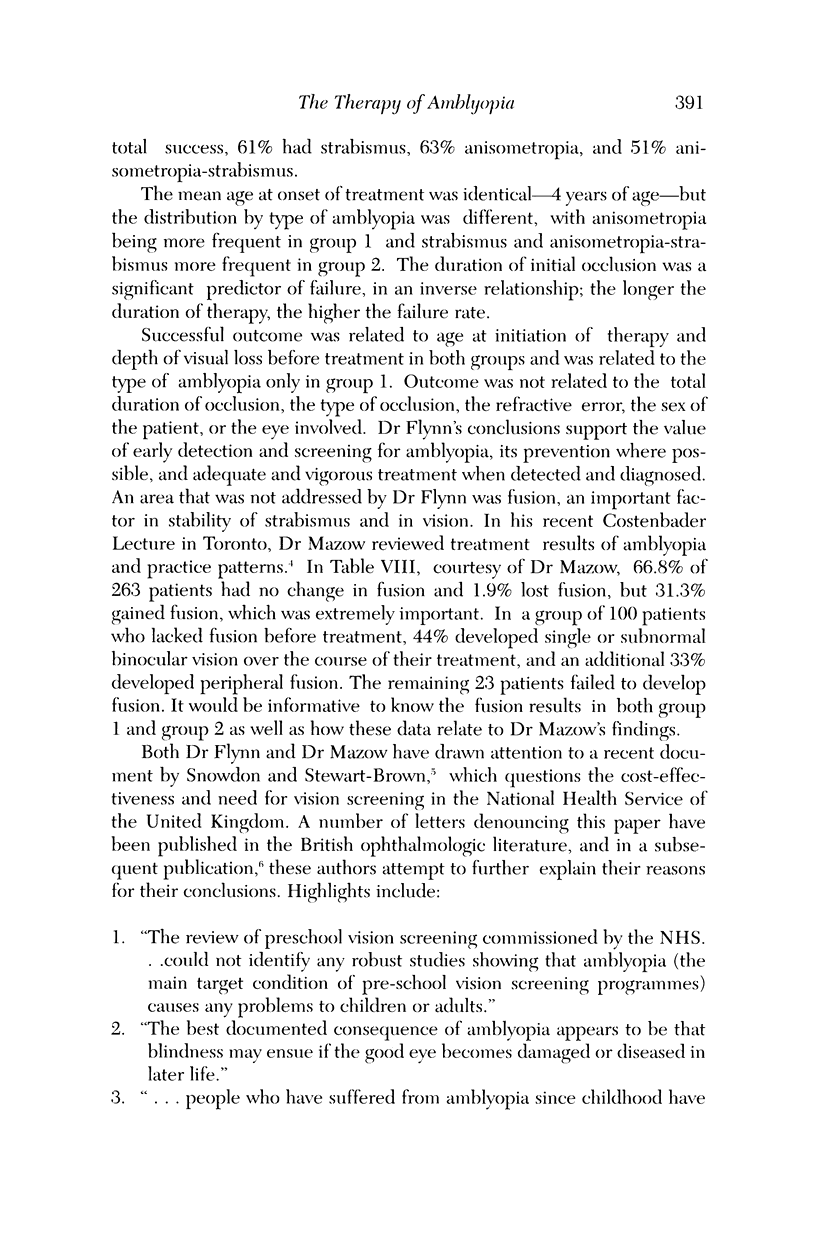
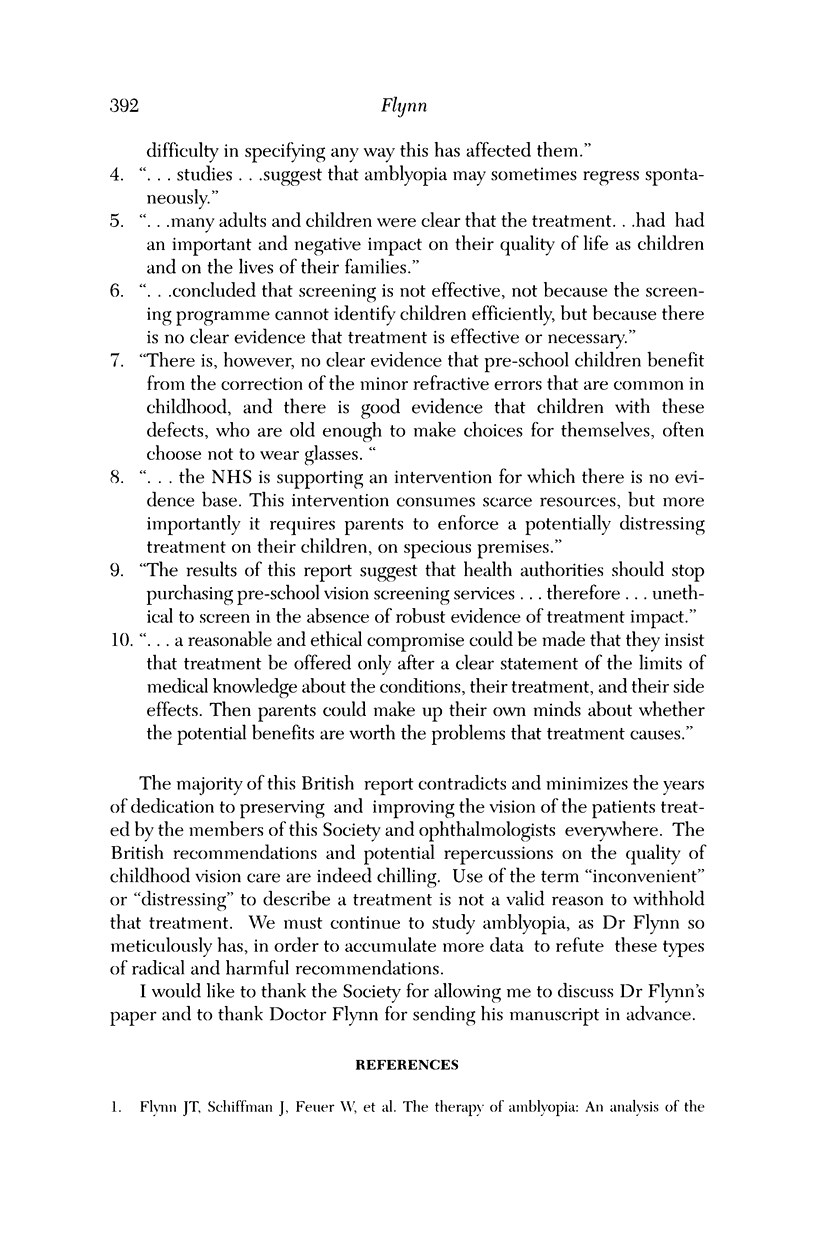
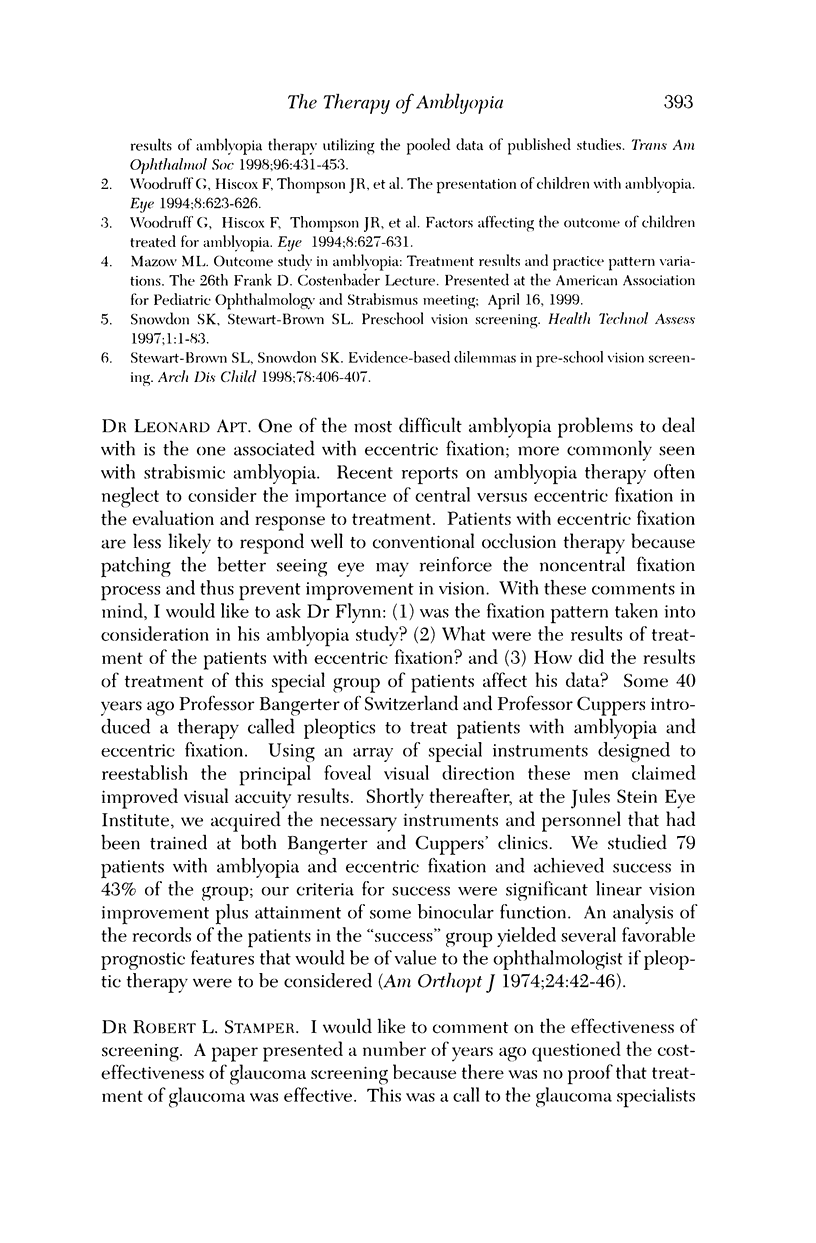
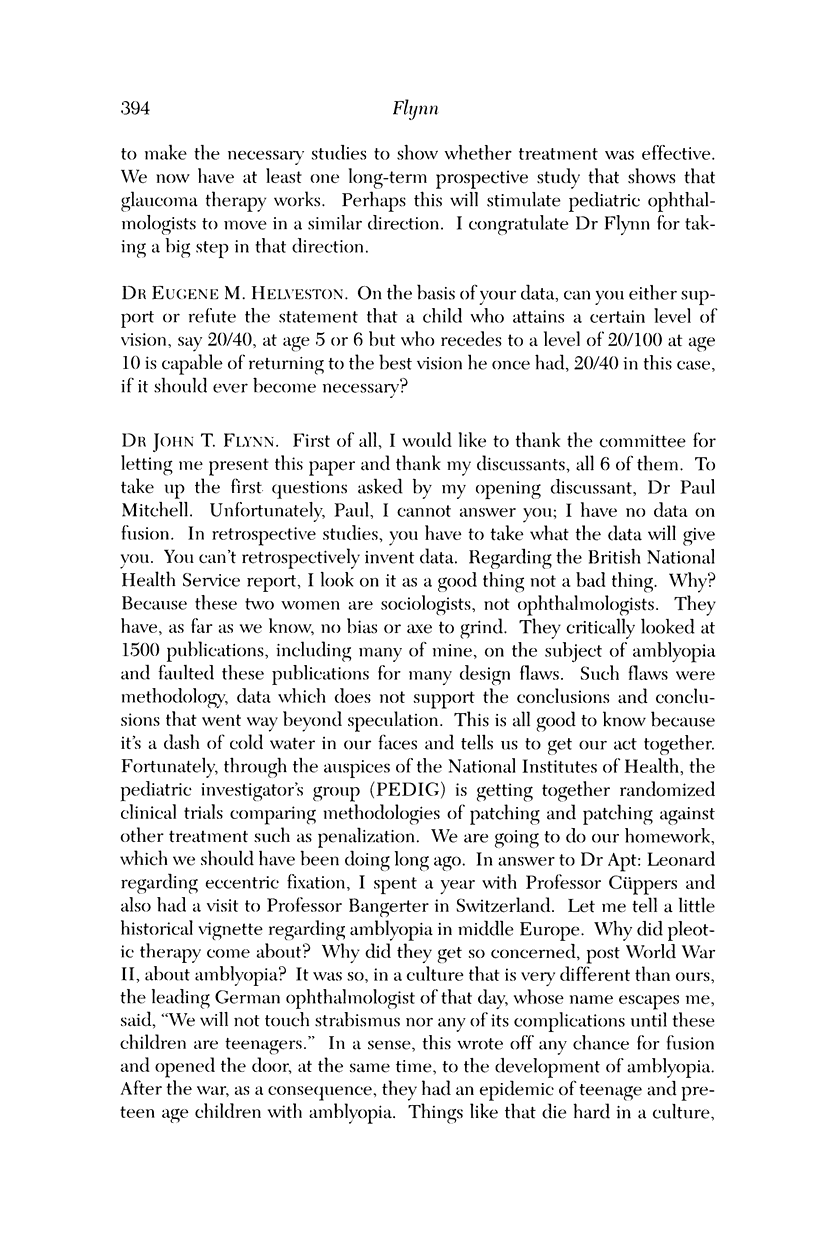
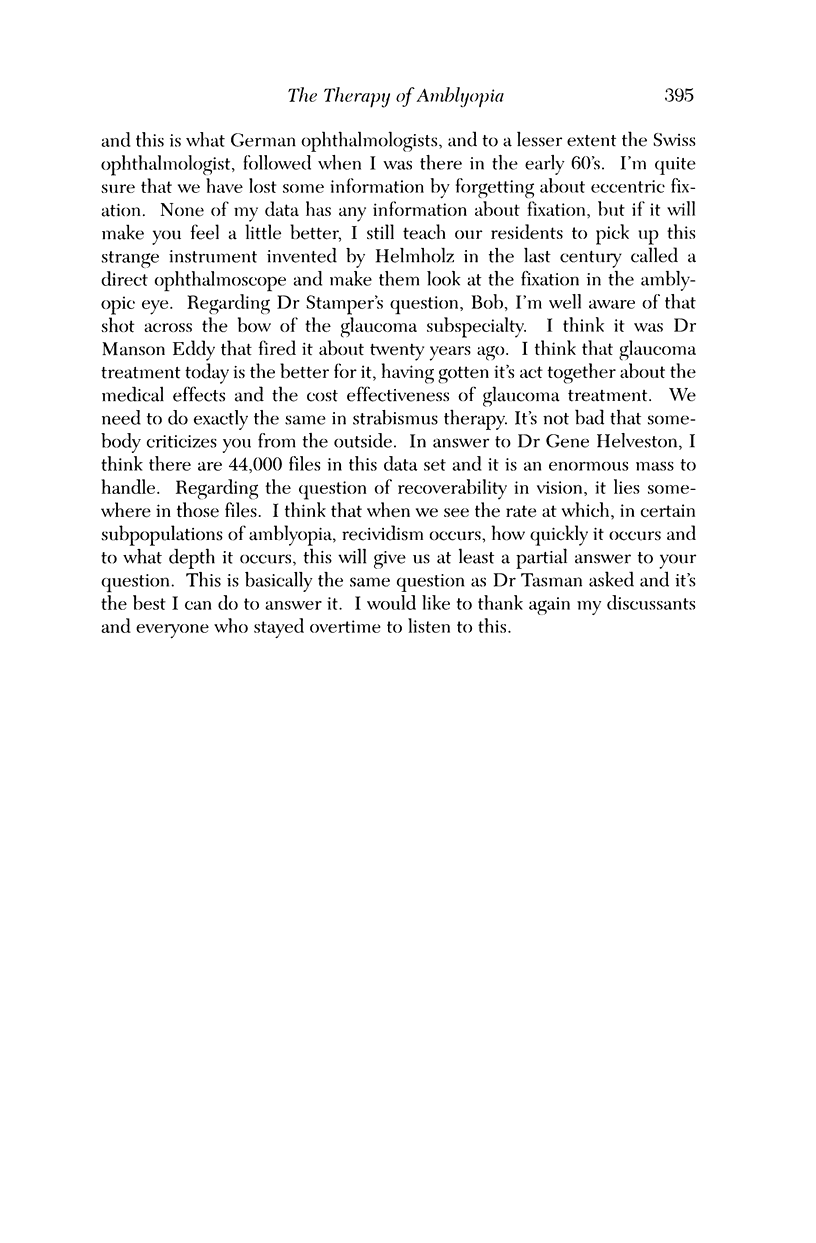
Images in this article
Selected References
These references are in PubMed. This may not be the complete list of references from this article.
- Attebo K., Mitchell P., Smith W. Visual acuity and the causes of visual loss in Australia. The Blue Mountains Eye Study. Ophthalmology. 1996 Mar;103(3):357–364. doi: 10.1016/s0161-6420(96)30684-2. [DOI] [PubMed] [Google Scholar]
- Brown M. H., Edelman P. M. Conventional occlusion in the older amblyope. Am Orthopt J. 1976;26:34–36. [PubMed] [Google Scholar]
- Catford G. V. Amblyopic occlusion: the results of treatment. Trans Ophthalmol Soc U K. 1967;87:179–193. [PubMed] [Google Scholar]
- Ching F. C., Parks M. M., Friendly D. S. Practical management of amblyopia. J Pediatr Ophthalmol Strabismus. 1986 Jan-Feb;23(1):12–16. doi: 10.3928/0191-3913-19860101-04. [DOI] [PubMed] [Google Scholar]
- Cibis L., Windsor C. Clinical results with passive amblyopia treatment. Am Orthopt J. 1967;17:56–61. [PubMed] [Google Scholar]
- Dana M. R., Tielsch J. M., Enger C., Joyce E., Santoli J. M., Taylor H. R. Visual impairment in a rural Appalachian community. Prevalence and causes. JAMA. 1990 Nov 14;264(18):2400–2405. [PubMed] [Google Scholar]
- Fulton A. B., Mayer D. L. Esotropic children with amblyopia: effects of patching on acuity. Graefes Arch Clin Exp Ophthalmol. 1988;226(4):309–312. doi: 10.1007/BF02172956. [DOI] [PubMed] [Google Scholar]
- Gokhale A. M., Gokhale S. A. Effect of occlusion treatment for amblyopia at various ages. J All India Ophthalmol Soc. 1969 Dec;17(6):256–258. [PubMed] [Google Scholar]
- Gottlob I., Wizov S. S., Reinecke R. D. Visual acuities and scotomas after 3 weeks' levodopa administration in adult amblyopia. Graefes Arch Clin Exp Ophthalmol. 1995 Jul;233(7):407–413. doi: 10.1007/BF00180943. [DOI] [PubMed] [Google Scholar]
- Gregersen E., Rindziunski E. "Conventional" occlusion in the treatment of squint amblyopia. A ten year follow-up. Acta Ophthalmol (Copenh) 1965;43(4):462–474. [PubMed] [Google Scholar]
- Hedgpeth E. M., Jr, Sullivan M. Anisometropic amblyopia and its treatment. South Med J. 1977 Sep;70(9):1059–1060. doi: 10.1097/00007611-197709000-00014. [DOI] [PubMed] [Google Scholar]
- Holladay J. T., Prager T. C. Mean visual acuity. Am J Ophthalmol. 1991 Mar 15;111(3):372–374. doi: 10.1016/s0002-9394(14)72328-1. [DOI] [PubMed] [Google Scholar]
- Jenkins T. C., Pickwell L. D. Success rate in the treatment of amblyopia by conventional methods. Ophthalmic Physiol Opt. 1982;2(3):213–219. [PubMed] [Google Scholar]
- Klein R., Wang Q., Klein B. E., Moss S. E., Meuer S. M. The relationship of age-related maculopathy, cataract, and glaucoma to visual acuity. Invest Ophthalmol Vis Sci. 1995 Jan;36(1):182–191. [PubMed] [Google Scholar]
- Kutschke P. J., Scott W. E., Keech R. V. Anisometropic amblyopia. Ophthalmology. 1991 Feb;98(2):258–263. doi: 10.1016/s0161-6420(91)32307-8. [DOI] [PubMed] [Google Scholar]
- Lam G. C., Repka M. X., Guyton D. L. Timing of amblyopia therapy relative to strabismus surgery. Ophthalmology. 1993 Dec;100(12):1751–1756. doi: 10.1016/s0161-6420(13)31403-1. [DOI] [PubMed] [Google Scholar]
- Leguire L. E., Walson P. D., Rogers G. L., Bremer D. L., McGregor M. L. Levodopa/carbidopa treatment for amblyopia in older children. J Pediatr Ophthalmol Strabismus. 1995 May-Jun;32(3):143–151. doi: 10.3928/0191-3913-19950501-05. [DOI] [PubMed] [Google Scholar]
- Noda S., Hayasaka S., Setogawa T. Occlusion therapy of Japanese children with anisometropic amblyopia without strabismus. Ann Ophthalmol. 1993 Apr;25(4):145–147. [PubMed] [Google Scholar]
- Oster J. G., Simon J. W., Jenkins P. When is it safe to stop patching? Br J Ophthalmol. 1990 Dec;74(12):709–711. doi: 10.1136/bjo.74.12.709. [DOI] [PMC free article] [PubMed] [Google Scholar]
- Rutstein R. P., Fuhr P. S. Efficacy and stability of amblyopia therapy. Optom Vis Sci. 1992 Oct;69(10):747–754. doi: 10.1097/00006324-199210000-00001. [DOI] [PubMed] [Google Scholar]
- Selenow A., Ciuffreda K. J., Mozlin R., Rumpf D. Prognostic value of laser interferometric visual acuity in amblyopia therapy. Invest Ophthalmol Vis Sci. 1986 Feb;27(2):273–277. [PubMed] [Google Scholar]
- Snowdon S. K., Stewart-Brown S. L. Preschool vision screening. Health Technol Assess. 1997;1(8):i-iv, 1-83. [PubMed] [Google Scholar]
- Stewart-Brown S. L., Snowdon S. K. Evidence-based dilemmas in pre-school vision screening. Arch Dis Child. 1998 May;78(5):406–407. doi: 10.1136/adc.78.5.406. [DOI] [PMC free article] [PubMed] [Google Scholar]
- Sullivan M. Results in the treatment of anisometropic amblyopia. Am Orthopt J. 1976;26:37–42. [PubMed] [Google Scholar]
- Tsubota K., Yamada M. Treatment of amblyopia by extended-wear occlusion soft contact lenses. Ophthalmologica. 1994;208(4):214–215. doi: 10.1159/000310491. [DOI] [PubMed] [Google Scholar]
- Widder W. Erfahrungen mit der Okklusionstherapie im 5.-7. Lebensjahr. Klin Monbl Augenheilkd. 1967 Nov;151(5):684–702. [PubMed] [Google Scholar]
- Woodruff G., Hiscox F., Thompson J. R., Smith L. K. Factors affecting the outcome of children treated for amblyopia. Eye (Lond) 1994;8(Pt 6):627–631. doi: 10.1038/eye.1994.157. [DOI] [PubMed] [Google Scholar]
- Woodruff G., Hiscox F., Thompson J. R., Smith L. K. Factors affecting the outcome of children treated for amblyopia. Eye (Lond) 1994;8(Pt 6):627–631. doi: 10.1038/eye.1994.157. [DOI] [PubMed] [Google Scholar]
- Woodruff G., Hiscox F., Thompson J. R., Smith L. K. The presentation of children with amblyopia. Eye (Lond) 1994;8(Pt 6):623–626. doi: 10.1038/eye.1994.156. [DOI] [PubMed] [Google Scholar]
- Woodruff G., Hiscox F., Thompson J. R., Smith L. K. The presentation of children with amblyopia. Eye (Lond) 1994;8(Pt 6):623–626. doi: 10.1038/eye.1994.156. [DOI] [PubMed] [Google Scholar]








